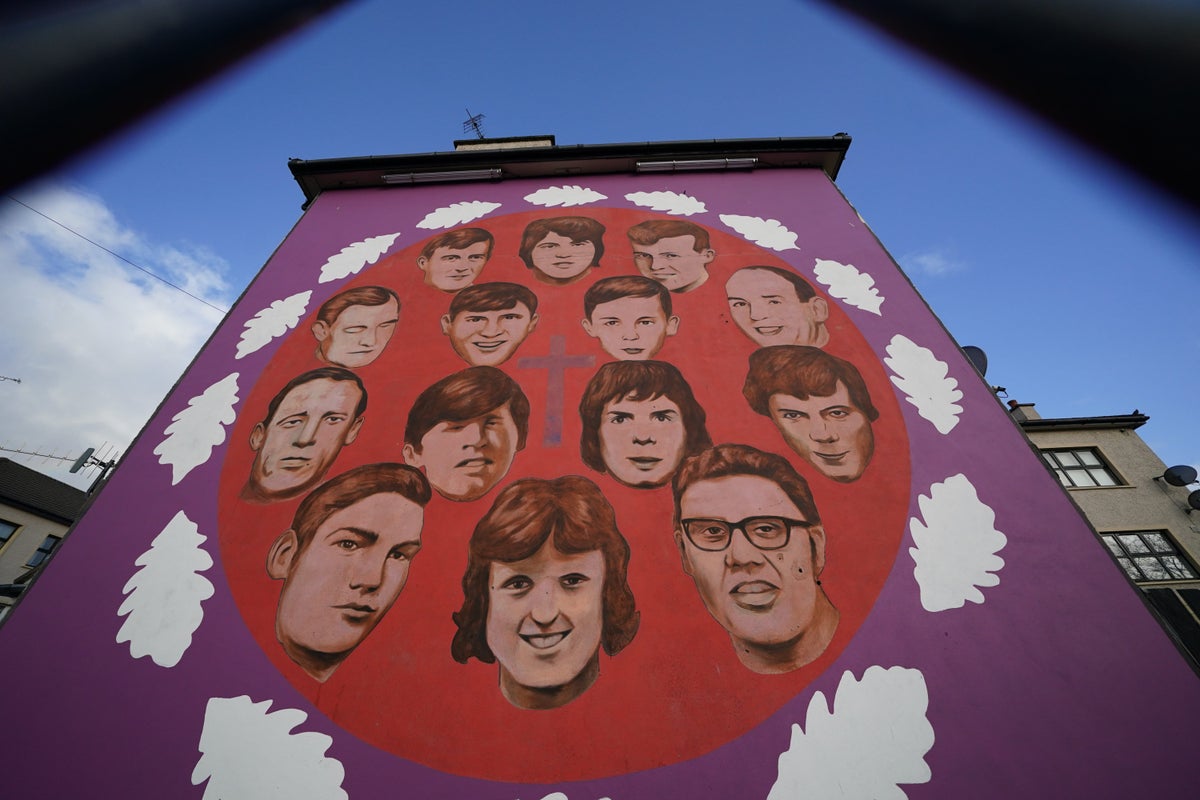
Northern Ireland Office ministers wrote to the Treasury in 1998 and 1999 seeking assurances that it would cover the spiralling costs of the Bloody Sunday Inquiry, newly released Government papers have revealed.
Alarm was raised at the higher than projected costs for the independent inquiry after the Ministry of Defence put forward the names of 3,000 soldiers as potential witnesses, instead of the anticipated 10.
However, the Treasury resisted the pressure to meet the rising costs, suggesting instead the NIO look to find savings within its own budget.
Details are contained in documents held at the Public Record Office in Belfast. Hundreds of the files are now being opened for public viewing under the 30/20 year rule.
In January 1998, then-prime minister Tony Blair announced a new inquiry, chaired by Lord Saville, into the events of Bloody Sunday in Londonderry.
Thirteen civil rights protesters were shot dead by British soldiers and 15 injured in the Bogside area of the city on January 30 1972. Another man shot by paratroopers that day died four months later.
A Department of Finance internal memo, sent on December 29, 1998, said that the original anticipated costs of the Saville Inquiry over two years had been £11 million.
It said no provision had been made for costs made beyond then as it “was anticipated that costs would not arise after March 2000”.
The memo added: “However, now that the inquiry has settled down to its work the initial assessment of costs has been reviewed by the NIO. The work to date has indicated that the inquiry could be in operation up to the year 2002 with total costs rising to as much as £30 million.”
It added: “Much of the increase is attributable to legal fees. In July, following legal submissions, it was decided to allow the families 13 counsel, 10 more than the original expectation.
“This was not a decision which Government could have influenced as it was essentially a judicial decision taken by Lord Saville and his colleagues.
“In addition, the Ministry of Defence has put forward 3,000 names for consideration as potential witnesses; initially only 10 soldiers had been put forward.”
The following day, NIO Minister of State Paul Murphy wrote to Chief Secretary of the Treasury Alan Milburn, seeking cover for the rising costs.
He pointed out that up to 800 civilian witnesses had been identified by the inquiry.
He said: “I am therefore seeking your agreement that the in-year pressure of £2.4 million can be met from the (Treasury) Reserve.
“Given that estimated costs for the next few years have increased, it would be prudent now to establish that these ‘ring-fenced’ increases would also be covered by the Reserve in succeeding years.”
One month later, Northern Ireland Secretary Mo Mowlam wrote to Mr Milburn to say that the in-year pressures had increased to £5.75 million.
She added: “I am writing to seek your agreement to the ongoing costs of the Bloody Sunday Inquiry being met from the Treasury Reserve.”
The following month, the Treasury responded with a letter which had been approved by Mr Milburn and signed in his absence.
It stated: “I fully recognise the difficulties that you face in financing the Bloody Sunday Inquiry and accept that, because of the independent nature of the inquiry, there is reduced scope to bring to bear normal public expenditure and value for money controls.
“I was concerned to learn that the Ministry of Defence’s decision to put forward, as potential witnesses, the names of some 3,000 military personnel will add some £1 million to the cost of the inquiry.
“There can, of course, be no presumption that all additional costs of the inquiry should be met from the Reserve.
“I do not accept the view that funding the inquiry from within the Northern Ireland Office’s normal departmental provision could be seen as undermining or interfering with the independent status of the inquiry.
“I would expect the department….to seek to find suitable offsetting savings before submitting a claim on the Reserve.”
He then suggests the additional funding could be found from an underspend from a prison officers’ redundancies package.
“I hope you will agree that this is a better way of funding the costs than access to the Reserve, which I cannot agree.
“For 1999-00 I see no need to approve access to the Reserve at this early stage. I would prefer to wait and see the actual pattern of spend on the inquiry, the availability of suitable offsets within the Northern Ireland Office and then to consider reserve claims in-year.
“I will of course need to be assured that savings cannot be found within the Northern Ireland Office’s provision.”
Ultimately the Saville Inquiry ran for 12 years and cost £195 million, making it the longest and most expensive public inquiry in UK history.
Lord Saville found that there was no justification for shooting any of those killed or wounded. Then-prime minister David Cameron issued a public apology, saying the killings were “unjustified and unjustifiable”.







